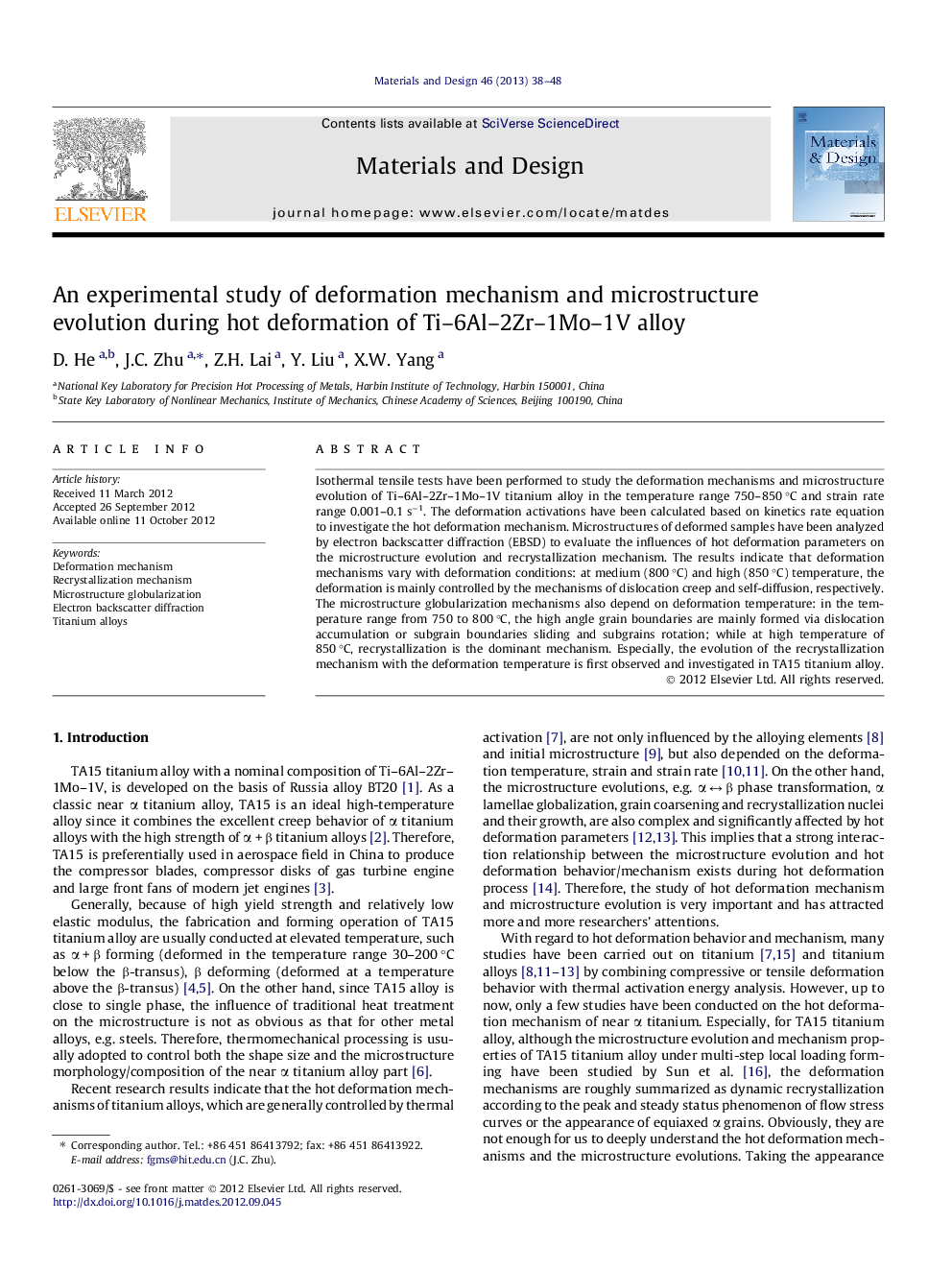| Article ID | Journal | Published Year | Pages | File Type |
|---|---|---|---|---|
| 830119 | Materials & Design (1980-2015) | 2013 | 11 Pages |
Isothermal tensile tests have been performed to study the deformation mechanisms and microstructure evolution of Ti–6Al–2Zr–1Mo–1V titanium alloy in the temperature range 750–850 °C and strain rate range 0.001–0.1 s−1. The deformation activations have been calculated based on kinetics rate equation to investigate the hot deformation mechanism. Microstructures of deformed samples have been analyzed by electron backscatter diffraction (EBSD) to evaluate the influences of hot deformation parameters on the microstructure evolution and recrystallization mechanism. The results indicate that deformation mechanisms vary with deformation conditions: at medium (800 °C) and high (850 °C) temperature, the deformation is mainly controlled by the mechanisms of dislocation creep and self-diffusion, respectively. The microstructure globularization mechanisms also depend on deformation temperature: in the temperature range from 750 to 800 °C, the high angle grain boundaries are mainly formed via dislocation accumulation or subgrain boundaries sliding and subgrains rotation; while at high temperature of 850 °C, recrystallization is the dominant mechanism. Especially, the evolution of the recrystallization mechanism with the deformation temperature is first observed and investigated in TA15 titanium alloy.
► Isothermal tensile deformations were carried on Ti–6Al–2Zr–1Mo–1V titanium alloy. ► Deformation activations were calculated based on kinetics rate equations. ► Deformation mechanisms are dislocation creep and self-diffusion at 800 and 850 °C. ► Microstructure globularization mechanisms varied with deformation temperature. ► Recrystallization mechanism changed from CDRX to DDRX as temperature increasing.
